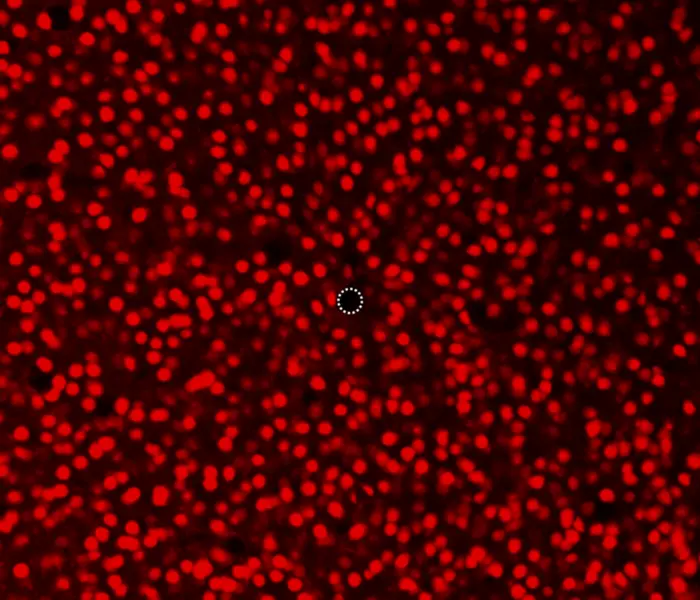In a remarkable breakthrough heralded by the Institute for Research on Next-generation Semiconductor and Sensing Science (IRES2) at Toyohashi University of Technology, researchers have developed a pioneering in vivo electrophysiological neural recording technology. This groundbreaking innovation is designed to minimize neuronal death while facilitating stable and long-term recordings that can last over a year. Such advancements in neural recording techniques hold significant promise for enhancing our understanding of the brain and addressing various neurological challenges.
In an experimental study involving mouse models, the research team demonstrated the impressive capabilities of their novel microneedle electrode. After a mere 24 hours post-implantation, the electrodes enabled successful in vivo recordings, and importantly, they maintained their performance for more than a year without significant increase in neuronal death rates. This achievement effectively addresses a long-standing challenge in neural recording: the balance between obtaining high-quality data and minimizing the physiological damage inflicted by electrode insertion.
The implications of these findings are profound, extending beyond fundamental neuroscience research. Long-term recordings of neuronal activity are critical for not only advancing scientific knowledge but also for developing clinical applications in the fields of neurology and neuroengineering. The ability to capture high-resolution, spatiotemporal neural signals using microelectrode devices has previously been impeded by the adverse effects of tissue damage. This new technology holds the promise of overcoming these barriers, offering a more reliable approach to studying brain function and its myriad disorders.
Hinata Sasaki, a Ph.D. candidate and the first author of the study, shared her experiences of undertaking this significant research. Over two years, she diligently recorded neuronal activity in mice implanted with the new electrodes, an endeavor not for the faint of heart. Her tenacity and dedication, coupled with the collaborative efforts of her research group, allowed for the completion of a project that has the potential to reshape the canvas of neural recording technologies.
Delving into the development background reveals the innovative spirit of the research team. Led by Professor Takeshi Kawano, the group initially confronted the inherent limitations imposed by rigid silicon substrates, which were notorious for causing substantial damage to soft brain tissues. During a brainstorming session, an idea surfaced: to eliminate the rigidity of the silicon substrate by modifying the microneedle design. The team devised a method to ‘break’ the base of the silicon microneedle, leading to the successful assembly of the silicon electrode onto a flexible parylene film substrate. This creative approach proved essential in achieving the groundbreaking results observed in their experiments.
After establishing a method for the flexible electrode’s manufacturing process, the research group focused on testing its efficacy. The astonishing results confirmed that the minimal tissue damage allowed for unprecedented levels of neuronal activity recording, revealing stable data over extended periods. This achievement has opened up new avenues for exploration in the neurological sciences, where understanding the long-term dynamics of brain activity is critical.
Research like this provides renewed hope for advancements in the treatment of neurological conditions, including various developmental disorders, epilepsy, and Alzheimer’s disease. With the innovative microneedle electrode technology, scientists can now look forward to conducting in-depth studies without the daunting limitation of rapid tissue deterioration that has plagued previous efforts. The reduced neuronal death rates observed with this new device could significantly impact therapeutic strategies and improve patient outcomes in the future.
The future outlook presented by the research group embraces the vast potential of their new technology. They intend to apply their findings to a wide range of neuroscience studies, giving researchers the tools necessary to explore complex brain functions effectively. The ability to monitor neuronal activity in a minimally invasive manner is a significant stride in bridging the gaps between basic research and clinical applications.
Moreover, this innovative technology has implications for advancements in brain-computer interface (BCI) systems and neuroprosthetics, which rely on precise and reliable neural recordings. As research progresses, the team anticipates that their work will inspire further innovations aimed at unraveling the complexities of the central nervous system and ultimately lead to breakthroughs in treating neurological disorders.
This research underscores the importance of interdisciplinary collaboration in advancing scientific knowledge. With support from various funding agencies, including the Japan Society for the Promotion of Science and the Japan Science and Technology Agency, this project highlights how collective efforts can pave the way for significant medical and technological advancements.
The path forward for this research is indeed promising. By leveraging new technologies and methodologies, scientists stand on the brink of unveiling further mysteries of the human brain, all while pushing the boundaries of what is achievable in the field of neuroscience. The developments at Toyohashi University of Technology are proof that with innovation, dedication, and vision, researchers can turn ambitious ideas into tangible results that have the potential to change the landscape of brain research and therapy for years to come.
In summary, the development of the 5-micrometer-diameter flexible microneedle electrode represents a monumental leap in the field of electrophysiological recording. With its potential to minimize neuronal damage while facilitating long-term monitoring of neuronal activity, it paves the way for groundbreaking research in neuroscience and neurology. As this technology continues to evolve, it promises to deepen our understanding of the brain’s intricate networks and contribute significantly to the future of clinical applications.
Subject of Research: Electrophysiological neural recording technology
Article Title: A Flexible-Substrate 5-μm-Diameter Needle Electrode: Minimizing Neuronal Death and Enabling Year-Long Neural Recording
News Publication Date: 5-Jan-2025
Web References: Advanced Materials Interfaces
References: Hinata Sasaki, Koji Yamashita, Sayaki Shimizu, Kensei Sakamoto, Rika Numano, Kowa Koida, and Takeshi Kawano (2025).
Image Credits: © Toyohashi University of Technology
Keywords
Applied sciences, semiconductor technology, neural recording, electrophysiology, neuroscience, microneedle development, brain research, flexible electronics, silicon technology.
Tags: brain research advancementsflexible electrode designin vivo electrophysiologylong-term neural recordingsmicroneedle electrode innovationmouse model experimentsneural recording technologyneuronal activity monitoringreducing neuronal deathsemiconductor sensing sciencetissue damage minimizationToyohashi University research





